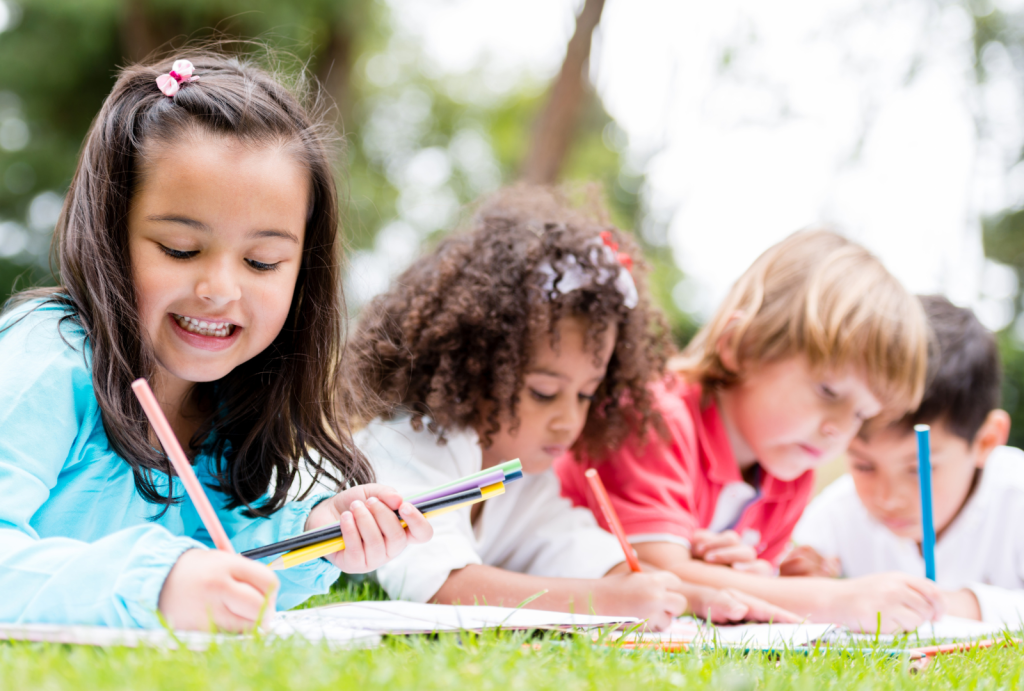Teaching children about colors is an exciting and important part of their early development. Recognizing and identifying colors helps children understand the world around them, improve their cognitive skills, and develop their language abilities. But as a parent or educator, you may wonder: How do I teach colors to my kids? The process can be both fun and educational if approached with the right techniques and tools. This guide will help you discover engaging ways to introduce colors to your children and make learning an enjoyable experience.
Why Is Learning Colors Important for Kids?

Before diving into how to teach colors, it’s essential to understand why learning colors is so important for young children. Colors are not only a way for children to express themselves but also play a crucial role in cognitive and language development.
1. Cognitive Development
Recognizing and differentiating between colors is a cognitive task that helps children sharpen their observation skills. As children learn to identify colors, they are also learning to categorize and organize information, which is essential for overall cognitive development.
2. Language Development
Learning colors introduces new vocabulary and helps children articulate their thoughts better. By naming and identifying colors, children expand their language skills and improve their ability to communicate more effectively.
3. Emotional Expression
Colors can also serve as a tool for emotional expression. Children often associate different colors with feelings (e.g., red for anger, blue for calm). By learning colors, children gain an additional way to express how they feel.
Fun and Effective Ways to Teach Colors
Now that we know the importance of teaching colors, let’s explore some fun and effective methods to introduce them to your kids. How do I teach colors to my kids in a way that’s engaging and memorable? Here are several strategies that can make the process enjoyable for both you and your child.

1. Use Everyday Objects
One of the easiest and most effective ways to teach colors is by using everyday objects around the house. Point out the colors of common items like fruits, toys, clothes, and household items.
- Examples: “Look at that red apple,” or “Your blue shirt is so bright!”
- Tip: Focus on one or two colors at a time to avoid overwhelming your child. For instance, you can start by identifying all the red objects in the room, then move on to another color.
2. Play Color Sorting Games
Color sorting games are a fun and interactive way to help children learn colors. You can use colored blocks, toys, or even everyday items to create a sorting game.
- How to Play: Gather a variety of objects in different colors and ask your child to sort them into piles based on color. You can use bowls or baskets as containers for each color.
- Benefits: This activity not only teaches colors but also helps improve fine motor skills and hand-eye coordination.
3. Engage in Coloring Activities
Coloring is an excellent way for children to practice recognizing and using colors. Give your child coloring books, crayons, and colored pencils, and encourage them to name the colors as they use them.
- Ask Questions: As your child colors, ask questions like, “What color is that crayon?” or “Can you find the yellow crayon?”
- Encourage Creativity: Let your child experiment with different colors, even if they color things in non-traditional ways (like a purple tree or an orange sky). This encourages creativity while reinforcing color recognition.
4. Sing Color Songs
Music is a powerful learning tool, and songs about colors can help children remember color names more easily. There are plenty of catchy songs about colors that you can sing together.
- Examples: Songs like “Red, Yellow, Green, Blue” or “I Can Sing a Rainbow” are perfect for teaching colors.
- Interactive Singing: You can use colored flashcards or objects to show the colors as you sing the song, making the lesson more interactive.
5. Read Books About Colors
Books that focus on colors are a fantastic resource for teaching color recognition. Look for children’s books that use vibrant illustrations and simple language to introduce colors.
- Recommendations: Books like Brown Bear, Brown Bear, What Do You See? by Bill Martin Jr. and The Color Monster by Anna Llenas are great for teaching colors while engaging your child’s imagination.
- Reading Tip: As you read, point out the different colors on each page and ask your child to identify them.
6. Go on Color Hunts
A color hunt is a simple, yet fun, activity that gets your child moving while learning about colors. You can do this activity indoors or outdoors.
- How to Play: Ask your child to find objects of a specific color around the house or outside. For example, “Can you find something green in the yard?”
- Benefits: This game encourages active learning and helps reinforce color recognition in a natural, relaxed setting.
7. Use Flashcards
Flashcards are a traditional but effective way to help children learn colors. You can buy ready-made color flashcards or create your own by cutting out colored pieces of paper or using colored photographs.
- How to Use: Show your child a card and ask them to name the color. You can also reverse the activity by naming a color and asking your child to find the corresponding card.
- Advanced Activity: Once your child has mastered basic colors, you can introduce shades (e.g., light blue, dark green) to help them differentiate between various hues.
FAQs About Teaching Colors
How do I teach colors to my kids who are struggling to understand?
If your child is struggling to learn colors, focus on one color at a time and make it a part of their daily routine. Point out that color in various contexts and offer plenty of positive reinforcement when they recognize it.
What’s the best age to start teaching colors?
Children can start learning about colors as early as 18 months. At this age, they may not be able to name the colors, but they will begin to recognize and differentiate between them.
Why is teaching colors important for children’s development?
Teaching colors is essential for cognitive development, language growth, and emotional expression. It helps children categorize and understand the world around them while also expanding their vocabulary.
What’s the easiest way to teach colors at home?
Incorporate colors into everyday activities, like sorting toys by color or identifying colors of objects during daily routines. Use simple games and songs to reinforce color recognition.
Conclusion
How do I teach colors to my kids? The key is to make learning colors a fun and engaging experience. By using everyday objects, games, songs, and books, you can introduce your child to the world of colors in a way that feels natural and enjoyable. Remember, every child learns at their own pace, so be patient and celebrate small victories along the way. As they begin to master color recognition, they will build the cognitive and language skills necessary for future learning.
